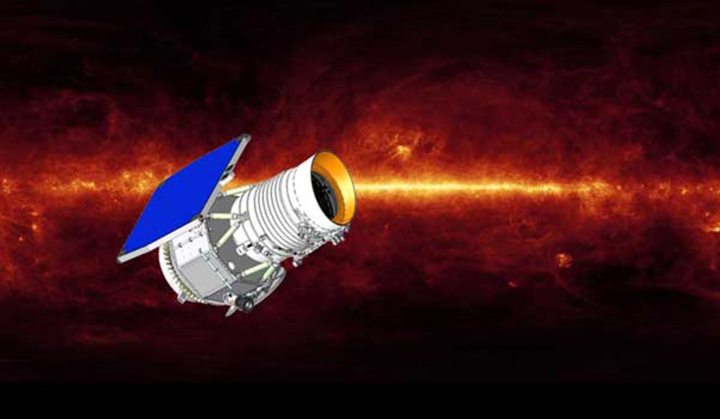Newsdeck
Mothballed NASA telescope may get new life as asteroid hunter

NASA is considering re-activating a mothballed space telescope to help find asteroids that could be on a collision course with Earth, according to a senior U.S. space agency official. By Irene Klotz.
Launched in December 2009, the Wide-field Infrared Survey Explorer, or WISE, telescope spent about a year taking pictures for an all-sky map. With its infrared detectors, WISE was able to peer through thick layers of dust and see even relatively dim objects such as cool brown dwarf stars in great detail.
NASA then put WISE to work on another mission looking for asteroids and comets in the solar system. Of particular interest were objects in orbits that pass relatively close to Earth.
WISE found about 150 near-Earth asteroids, including 20 that were potentially hazardous, before funding for the project ran out. The telescope was put into hibernation in February 2011.
NASA is now reviewing options for enhancing its asteroid-hunting efforts including bringing WISE out of hibernation, Lindley Johnson, who oversees the agency’s Near-Earth Objects observations program, said this week.
This follows February’s explosion of a small asteroid in the skies above Russia and the near-Earth passage of a larger one the same day.
More than 1,500 people were hurt by flying glass and debris after that small asteroid exploded above Chelyabinsk, Russia. The larger asteroid then zipped past Earth closer than the networks of communication satellites that ring the planet.
Together, those events served as a celestial alarm clock, prompting congressional hearings and fresh calls for NASA and other agencies to step up asteroid detection initiatives.
NASA says it already has found about 95 percent of the asteroids that are .62 miles (1 km) or larger in diameter.
“If an object of that size were to impact the Earth, it would have global consequences,” Lindley said during a NASA advisory committee meeting in Washington. “One as much as 100 meters (328 feet) in size would have regional effects and could cause a great many casualties.”
The Obama administration has requested funding from Congress to double NASA’s $20 million Near-Earth Objects detection programs for the 2014 fiscal year beginning Oct. 1.
Costs for WISE’s potential re-activation and operation were not released, but Johnson said it may be possible within the program’s current $20 million annual budget and would easily fit within the proposed $40 million spending plan.
NASA’s human exploration program also has been developing an initiative to send a robotic spacecraft to a small nearby asteroid and redirect it into a high orbit around the moon, officials said.
Astronauts would then visit the asteroid as part of an initial foray to send humans beyond the International Space Station, which flies about 250 miles (400 km) above Earth.
Another $85 million in Obama’s $17.7 billion 2014 spending plan for NASA would start technology developments and planning for the robotic portion of the asteroid encounter.
NASA is about halfway through a 15-year effort to find 90 percent of all near-Earth objects that are as small as about 459 feet (140 meters) in diameter.
Scientists say one of the quickest ways to speed up the effort is to re-activate WISE. “We think it can be operated for three years and get much more data,” Johnson said.
Time is of the essence as WISE is expected to slip from its optimal viewing orbit around Earth by early 2017. DM
Photo: An artist’s concept of Wide-field Infrared Survey Explorer is shown in this publicity illustration released to Reuters November 17, 2009. NASA plans next month to launch a space telescope that will scan the heavens for the infrared glow of celestial objects never seen because they are too dim, dusty or distant, scientists said on Tuesday. REUTERS/NASA/JPL-Caltech/Handout




















 Become an Insider
Become an Insider